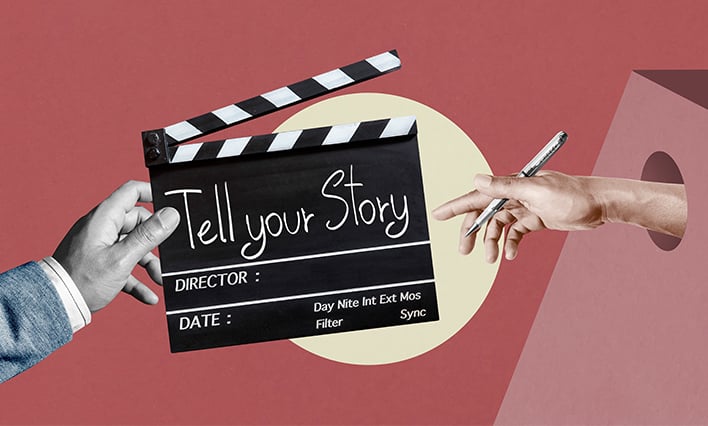Storytelling can make you a better marketer if you remember these vital points.
When my colleague Mark Johnson prepares clients to meet with B2B trade media editors at trade shows, he hammers them to create a story for each of their key message points. People learn through stories, he says. It’s how the human brain is wired.
He’s right, of course. I was invited to attend a recent storytelling workshop as part of a business group I’m a member of. The speaker talked about how to wrap emotions into our stories to tap into how people FEEL when they face a pain point, or how we want them to feel when we create great marketing content for them.
A few takeaways to share:
- Humans can only remember three points. No more.
- People remember more when we connect the dots for them, when we create associations with something they already know. (That’s why companies often pitch themselves as “The Uber of…”).
- The best stories are built around a structure called CPR: Connect, Persuade and Recall (see, just three points to remember).
Some may think that the technical/engineer buyer isn’t interested in storytelling, but the human brain works the same for engineers as it does for any of us. Technical buyers are logical, detail-oriented, and skeptical of marketing fluff, to be sure. They look for substance and credibility in any of our marketing campaigns. But that doesn’t mean the story isn’t important – it just requires that we tell the story in a way that not only engages emotionally but also satisfies their intellectual and practical requirements.
When we do this right, storytelling becomes a critical strategy in bridging the gap between emotional engagement and the delivery of technical information. By crafting narratives that resonate on a human level, we can even be MORE effective at delivering complex technical concepts. Here are some ways to do this for your next campaign:
- Use Case Studies and Customer Success Stories: real-world examples of how your product/service has solved a specific problem form the core of the problem-solution storytelling formula that works so well in B2B marketing. They provide a narrative framework that technical buyers can relate to in a way that is more credible than most because it comes from their peers.
- Incorporate Data and Evidence: While storytelling appeals to the emotional side, technical buyers also need data to back up your claims. Don’t just tell me your product is great, we often say: SHOW ME!
- Leverage Visual Storytelling: Engineers and technical professionals often respond well to visual data. Diagrams, infographics, and videos can help illustrate complex ideas far better than text alone.
- Focus on the Problem-Solution Formula: Highlighting the challenges your customer faces and how you solve them can create an easy-to-relate-to narrative that connects quickly and memorably for any technical buyer.
- Personalize Your Stories: Personalization goes a long way in making stories more relatable. Tailoring your message to reflect specific pain points from that person, that industry, or that company will make your story the one that sticks in their minds long after hearing it.
Every product has a story behind why it exists. Find a way to tell yours, and you’ll elevate your marketing campaign in a way that makes a mark they’ll remember







